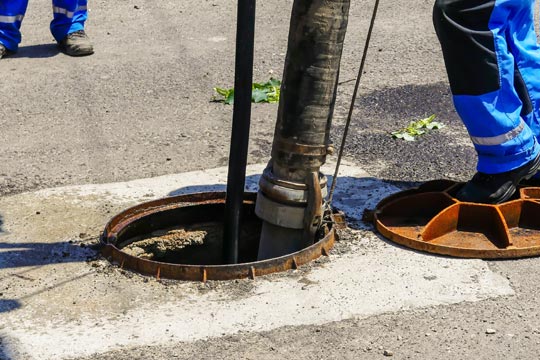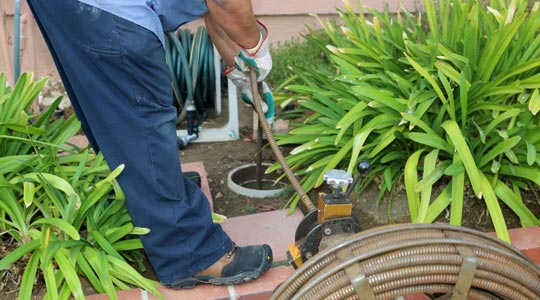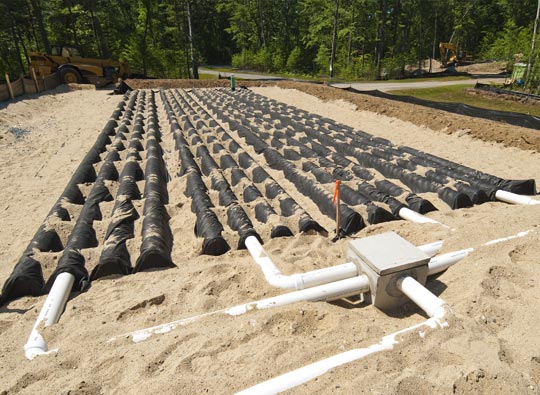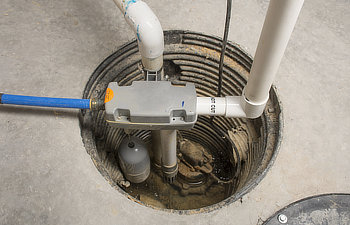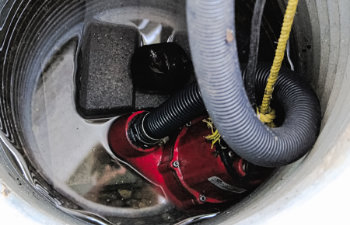You can always expect high-quality service when you call Septic Service Pro for your septic needs. We have built a stellar reputation in our industry by serving the residents and businesses in northern Georgia for many years. You can trust our team of septic specialists when you need any type of septic service, from routine maintenance and emergency repairs to pumping and inspections.
At Septic Service Pro, our expertise is septic systems. We are not plumbers that occasionally do septic system work; septic inspections, repairs and maintenance are all we do. When you call us for a septic issue, you can be assured that our crew can handle any issue you have. We are licensed and insured to repair, install (which we no longer do) and inspect septic systems in Georgia, with an excellent reputation for our quality. Regardless of whether you need a routine inspection or a drain field repair, we are ready to come and assist you with your septic problem.

A septic system is designed to take all waste water used by humans in a house and process it to be returned to the environment in a safe and sanitary condition. The great majority of these systems operate as gravity systems depending on water to flow downhill. Exceptions occur when the waste water must be lifted up to proceed to the next step, then an electrical pump is used.
The clean water enters the house under pressure. It is distributed in the house to sinks, toilets, showers, washing machines, etc. by pipes with faucets or valves to control flow. Once the water is used, it flows by gravity to drain pipes which slope downhill connecting to larger drainpipes collecting all the water until finally there is one gravity fed drainpipe leaving the house.
The drain pipe leaving the house is connected to a septic tank located downhill (lower) to the house. This tank is sized 250 gallons for each bedroom (assuming 2 people per bedroom). (The number of people potentially in the house is important, not the number of toilets.) Standard septic tanks come in 1000 gallon and 1500 gallon sizes. If a garbage disposal is installed in the house by the builder, he must install a 50% large tank than the number of bedroom calculation, because of the added organic solids created by the disposal. Example: (3 bedrooms X 250 gallons = 750 gallons or a 1000 gallon – smallest- tank.) (1000 gallon X 1.50 = 1500 gallon tank with disposal)
Note: Tanks are sized so under average conditions – – the solids collected in the bottom on the tank need to be pumped out every 3 to 5 years when the occupancy of house with 1000 gallon tank is 8 people or with a 1500 gallon tank 12 people.
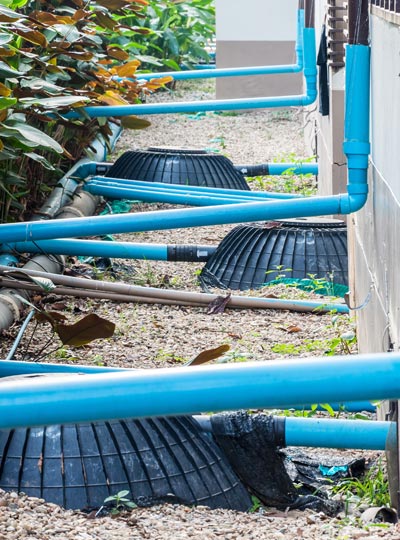
Once the water enters the tank, some material floats and some sinks to the bottom. The bacteria entering the tank with the water, multiplies eating the organic matter which has come in. As the floating layer is eaten the remains fall to the bottom. The floating layer is kept in the tank by the exit baffle tee so it cannot go down the exit pipe leading to the absorption (leech, or drain} field which is placed lower than the exit hole in the septic tank – – water flow from house to soil is all by gravity.
If there is any blockage along this route to the tank, then the water leaving the house cannot leave, so it comes out in the house at the lowest escape point in the drain plumbing – – the lowest shower, tub, or toilet in the house. The septic tank cannot push water up hill, so water on the floor is the water you used at a location higher in the house. This is called “Backup”, but it should be called a “STOP up”. Simply stated the last sink, shower, or flush can not leave the house via the main line so it follows the path of least resistance. i.e. the lowest shower of gurgling toilet.
Electric lift pumps can be used:
- Most common to lift water from a bathroom installed in the basement lower than the main septic or sewer drain pipe leaving the house to force the used bathroom water into the main drain from the house,
- To lift water exiting the septic tank to an absorption field higher than the septic tank because the land best suitable for the drain field is higher than the septic tank exit hole.
Sump pumps are not connected to the septic system or sewer but are used to lift ground water entering the basement back outside and not into sewer or septic tank.



